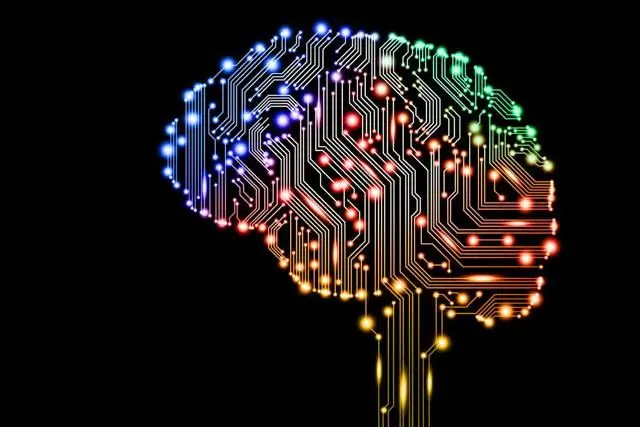2025 Author: Howard Calhoun | [email protected]. Last modified: 2025-01-24 13:10:35
What is a thermal power plant and what are the principles of operation of a thermal power plant? The general definition of such objects sounds approximately as follows - these are power plants that are engaged in the processing of natural energy into electrical energy. Natural fuels are also used for these purposes.
The principle of operation of thermal power plants. Short Description
To date, thermal power plants are the most widely used. Fossil fuels are burned at such facilities, which releases thermal energy. The task of the TPP is to use this energy to get electricity.

The principle of operation of TPPs is the generation of not only electrical energy, but also the production of thermal energy, which is also supplied to consumers in the form of hot water, for example. In addition, these energy facilities generate about 76% of all electricity. Such a wide distribution is due to the fact that the availability of organic fuel for the operation of the station is quite large. The second reason was that the transportation of fuel from the place of its production to the station itself is quite simple andestablished operation. The principle of operation of the TPP is designed in such a way that it is possible to use the waste heat of the working fluid for secondary delivery to its consumer.
Separation of stations by type
It is worth noting that thermal stations can be divided into types depending on what kind of energy they produce. If the principle of operation of a thermal power plant is only in the production of electrical energy (that is, thermal energy is not supplied to the consumer), then it is called a condensing power plant (CPP).

Facilities intended for the production of electrical energy, for the release of steam, as well as the supply of hot water to the consumer, have steam turbines instead of condensing turbines. Also in such elements of the station there is an intermediate steam extraction or a counter-pressure device. The main advantage and operating principle of this type of thermal power plant (CHP) is that the exhaust steam is also used as a heat source and supplied to consumers. In this way, heat loss and the amount of cooling water can be reduced.
Basic principles of TPP operation
Before proceeding to the consideration of the very principle of operation, it is necessary to understand what kind of station we are talking about. The standard arrangement of such facilities includes such a system as reheating of steam. It is necessary because the thermal efficiency of a circuit with an intermediate overheating will be higher than in a system where it is absent. In simple words, the principle of operation of a thermal power plant with such a scheme will be much more efficient with the sameinitial and final preset parameters than without it. From all this, we can conclude that the basis of the station's operation is fossil fuel and heated air.

Scheme of work
The principle of operation of the TPP is constructed as follows. The fuel material, as well as the oxidizing agent, the role of which is most often assumed by heated air, are fed into the boiler furnace in a continuous stream. Substances such as coal, oil, fuel oil, gas, shale, peat can act as fuel. If we talk about the most common fuel in the Russian Federation, then this is coal dust. Further, the principle of operation of a thermal power plant is constructed in such a way that the heat that is generated due to the combustion of fuel heats the water in the steam boiler. As a result of heating, the liquid is converted into saturated steam, which enters the steam turbine through the steam outlet. The main purpose of this device at the station is to convert the energy of the incoming steam into mechanical energy.

All elements of the turbine capable of moving are closely connected with the shaft, as a result of which they rotate as a single mechanism. To make the shaft rotate, the steam turbine transfers the kinetic energy of the steam to the rotor.
Mechanical operation of the station
The device and principle of operation of the TPP in its mechanical part is connected with the operation of the rotor. The steam that comes from the turbine has a very high pressure and temperature. This creates a high internal energy.steam, which comes from the boiler to the turbine nozzles. Steam jets, passing through the nozzle in a continuous stream, at a high speed, which is often even higher than the sound speed, act on the turbine blades. These elements are rigidly fixed to the disk, which, in turn, is closely connected to the shaft. At this point in time, the mechanical energy of the steam is converted into the mechanical energy of the rotor turbines. Speaking more precisely about the principle of operation of a thermal power plant, the mechanical effect affects the rotor of the turbogenerator. This is due to the fact that the shaft of a conventional rotor and generator are closely connected. And then there is a fairly well-known, simple and understandable process of converting mechanical energy into electrical energy in a device such as a generator.

Steam movement after the rotor
After the water vapor passes the turbine, its pressure and temperature drop significantly, and it enters the next part of the station - the condenser. Inside this element, the reverse transformation of vapor into liquid occurs. To accomplish this task, there is cooling water inside the condenser, which enters there through pipes passing inside the walls of the device. After the steam is converted back into water, it is pumped out by a condensate pump and enters the next compartment - the deaerator. It is also important to note that the pumped water passes through the regenerative heaters.
The main task of the deaerator is to remove gases from the incoming water. Simultaneously with the cleaning operation, the liquid is also heated in the same way asin regenerative heaters. For this purpose, the heat of the steam is used, which is taken from what follows into the turbine. The main purpose of the deaeration operation is to reduce the content of oxygen and carbon dioxide in the liquid to acceptable values. This helps to reduce the impact of corrosion on the paths that supply water and steam.

Stations on the coal
There is a high dependence of the principle of operation of thermal power plants on the type of fuel that is used. From a technological point of view, the most difficult substance to implement is coal. Despite this, raw materials are the main source of nutrition at such facilities, which account for approximately 30% of the total share of stations. In addition, it is planned to increase the number of such objects. It is also worth noting that the number of functional compartments required for the operation of the station is much larger than that of other types.
How coal-fired thermal power plants work
In order for the station to operate continuously, coal is constantly brought along the railway tracks, which is unloaded using special unloading devices. Then there are elements such as conveyor belts, through which the unloaded coal is fed to the warehouse. Next, the fuel enters the crushing plant. If necessary, it is possible to bypass the process of supplying coal to the warehouse, and transfer it directly to the crushers from unloading devices. After passing through this stage, the crushed raw material enters the raw coal bunker. The next step is the supply of material throughfeeders for pulverized coal mills. Further, coal dust, using a pneumatic method of transportation, is fed into the coal dust bunker. Passing this path, the substance bypasses such elements as a separator and a cyclone, and from the bunker it already enters through the feeders directly to the burners. The air passing through the cyclone is sucked in by the mill fan, after which it is fed into the combustion chamber of the boiler.

Further, the movement of the gas looks something like this. The volatile matter formed in the combustion chamber passes sequentially through such devices as the gas ducts of the boiler plant, then, if a steam reheating system is used, the gas is supplied to the primary and secondary superheaters. In this compartment, as well as in the water economizer, the gas gives off its heat to heat the working fluid. Next, an element called an air superheater is installed. Here, the thermal energy of the gas is used to heat the incoming air. After passing through all these elements, the volatile substance passes into the ash catcher, where it is cleaned of ash. The smoke pumps then draw the gas out and release it into the atmosphere using a gas pipe.
TPP and NPP
Quite often the question arises of what is common between thermal and nuclear power plants and whether there is a similarity in the principles of operation of thermal power plants and nuclear power plants.
If we talk about their similarities, then there are several of them. Firstly, both of them are built in such a way that they use a natural resource for their work, which is a fossil and excavated. Besides,it can be noted that both objects are aimed at generating not only electrical energy, but also thermal energy. The similarities in the principles of operation also lie in the fact that thermal power plants and nuclear power plants have turbines and steam generators involved in the process. The following are just some of the differences. These include the fact that, for example, the cost of construction and electricity received from thermal power plants is much lower than from nuclear power plants. But, on the other hand, nuclear power plants do not pollute the atmosphere as long as the waste is properly disposed of and there are no accidents. While thermal power plants, due to their principle of operation, constantly emit harmful substances into the atmosphere.
Here lies the main difference in the operation of nuclear power plants and thermal power plants. If in thermal facilities, thermal energy from fuel combustion is most often transferred to water or converted into steam, then at nuclear power plants, energy is taken from the fission of uranium atoms. The resulting energy diverges to heat a variety of substances and water is used here quite rarely. In addition, all substances are in closed sealed circuits.
Heat supply
At some TPPs, their schemes may provide for such a system that heats the power plant itself, as well as the adjacent village, if any. To the network heaters of this unit, steam is taken from the turbine, and there is also a special line for condensate removal. Water is supplied and discharged through a special piping system. The electrical energy that will be generated in this way is diverted from the electric generator and transferred to the consumer,passing through step-up transformers.
Main equipment
If we talk about the main elements operated at thermal power plants, then these are boiler houses, as well as turbine installations paired with an electric generator and a condenser. The main difference between the main equipment and the additional equipment is that it has standard parameters in terms of its power, productivity, steam parameters, as well as voltage and current strength, etc. It can also be noted that the type and number of basic elements are selected depending on how much power you need to get from one TPP, as well as on the mode of its operation. An animation of the principle of operation of a thermal power plant can help to understand this issue in more detail.
Recommended:
Mind management: concept, definition, basic principles and thematic books

Few modern people know how to manage their time. Despite the popularity of time management, people get lost in the flow of information, and they can’t manage to fix their lives. And all why? For the reason that they do not have a single system for structuring information. Mind management will help you bring order to eternal chaos
Talent management: concept, basic principles, personnel policy and development programs

This article is devoted to the consideration of the talent management system. The information provided will provide a detailed description of the talent management strategy at the enterprise, its basic principles and stages of work with personnel
Porter's strategies: basic strategies, basic principles, features

Michael Porter is a renowned economist, consultant, researcher, teacher, lecturer and author of numerous books. who developed their own competition strategies. They take into account the size of the market and features of competitive advantages. These strategies are detailed in the article
Assessment of the investment attractiveness of an enterprise: basic concepts, methods, principles, ways to improve

Production investments are the backbone of any enterprise. Large capital investments will allow creating or updating the existing material and technical base, replacing physically or morally worn-out fixed assets, increasing the volume of activities, mastering new types of products, expanding sales markets, etc
Matrix management structure: scheme, basic principles, efficiency

In the framework of this article, the basics of the formation and characteristics of the matrix management structure in modern companies are considered. The main disadvantages and advantages of the structure, features and characteristics are reflected. An example of such a structure is given. The possibilities of its application in different companies are considered

